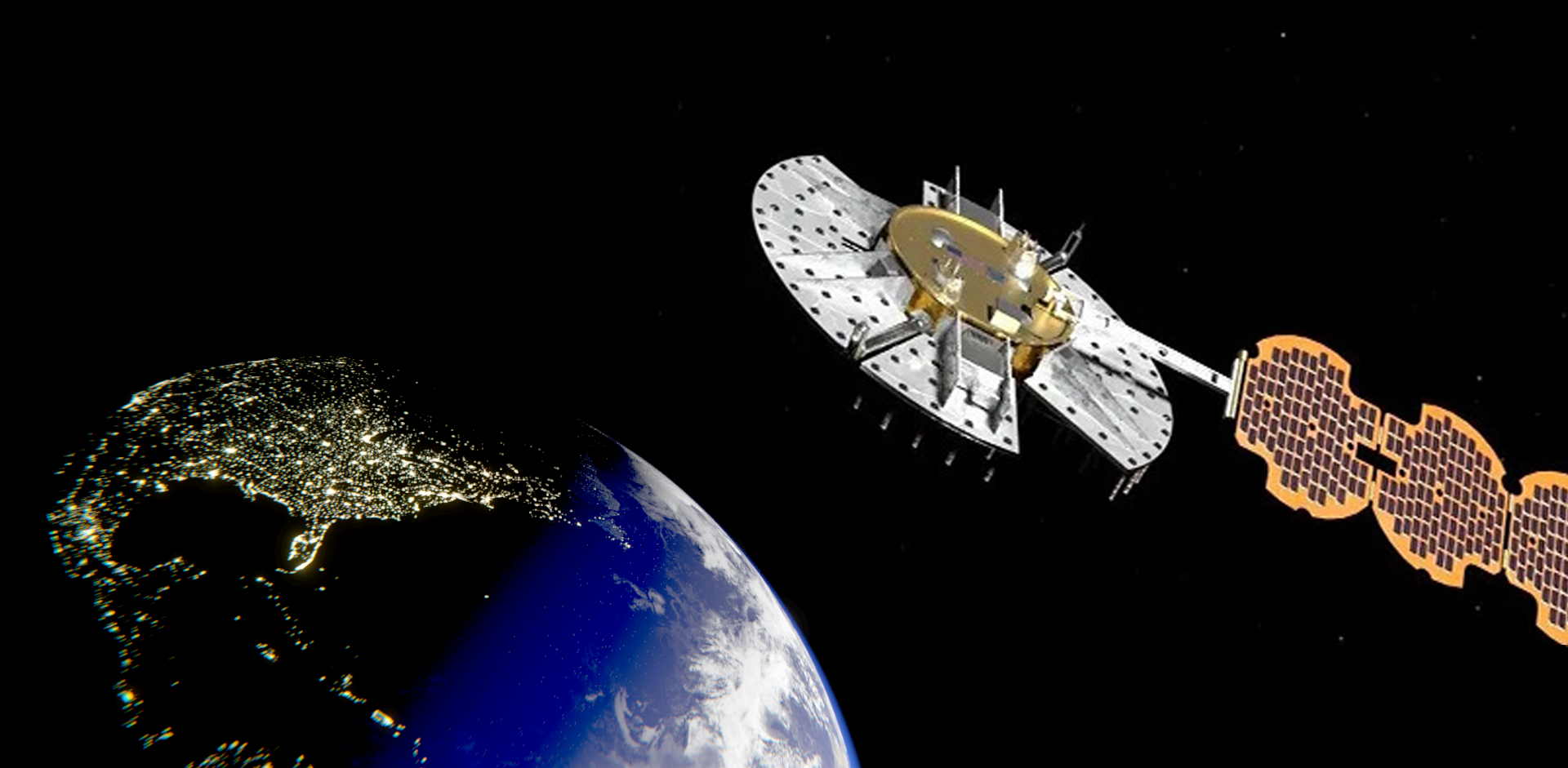NAVIGATION TECHNOLOGY SATELLITE – 3 (NTS-3)
VANGUARD: SOLUTIONS TO 21ST CENTURY THREATS AGAINST GPS
THE NTS-3 DEMONSTRATION RELIES ON THREE MUTUALLY-INTERDEPENDENT SEGMENTS:
- A space-based experimental satellite
- Ground-based command and control system
- Agile software-defined user receivers
These segments are designed to change and adapt over time, meaning that new operational threats, or circumstances, can be addressed through a software update rather than through a new hardware solution.
WHAT IS IT?
In 2019, the Department of the Air Force designated NTS-3 as one of three initial Vanguard programs. Anticipated to launch in late 2024, NTS-3 will be the Department of Defense’s first experimental, integrated navigation satellite system in nearly 50 years. NTS-3 builds on the legacy of NTS-1 and NTS-2, which were launched in the 1970’s, and it will push the boundary of today’s space-based position, navigation, and timing (PNT) technology to pave the way for a more robust, resilient, and responsive architecture for satellite navigation (SATNAV) technology.
The United States Space Force’s Global Positioning System (GPS) provides precise and widely-available position, navigation, and timing information to the warfighter. It has become a vital utility for both military and commercial use across the world. GPS aides in air traffic control, banking, farming, cellular networks, and countless other industries, and it is perhaps the space system that people around the world depend on the most through each day. The rapidly increasing pace of new threats to GPS such as jamming and spoofing, however, indicate that agile and resilient approaches to augment the GPS system are needed to maintain users’ access to its critical service.

Artist’s concept for NTS-3 in geostationary orbit. L3Harris Corporation will integrate NTS-3 using Northrop Grumman’s ESPAStar bus, building on EAGLE’s flight heritage. Graphic Credit: 1st Lt. Jacob Lutz
YOUR CELL PHONE GETS REGULAR UPDATES, WHY NOT REPROGRAM YOUR SATELLITE?
The NTS-3 satellite, developed by L3Harris Technologies, will operate for one year in a near-geosynchronous orbit, and it will be the center point for multiple experiments across multiple technical areas. The satellite will broadcast navigation signals from its phased array antenna, which can electronically steer signals to a desired region without physically moving the satellite. These signals are created through a digital, onorbit reprogrammable PNT signal generator, which not only supports legacy signals and advanced signals not currently broadcast on GPS, but also allows new signal updates after launch.
NTS-3 will test the CHIMERA signal authentication protocol, which is designed to jointly authenticate satellite orbit data and measurements of the range between the satellite and user, to provide an extremely robust protection against GPS spoofing for civil users. Future versions of CHIMERA, or different kinds of signals, can be uploaded to the satellite at any point after launch, based on new knowledge or threat developments on the ground.
Because SATNAV is critically dependent on precise timekeeping, NTS-3 will have multiple atomic clocks and timing sources onboard the satellite that will be used both independently and as an optimized ensemble to allow for automatic clock error detection and correction.
UPGRADED CONTROL FOR THE DIGITAL AGE
The NTS-3 ground control segment was designed to be at the forefront of USSF enterprise approaches to satellite command and control (C2). One goal is to move from stove piped ground systems, each designed for a single mission and with little to no applicability to different space systems, to a more modular C2 architecture with software components that can support multiple DoD satellite systems.
NTS-3 ground control is also moving into the future by leveraging commercially-available services such as ground antennas and monitoring receivers. This will increase opportunities for contact time with the satellite while reducing dependence on strained government antenna resources. Additionally, deploying NTS-3 C2 software capabilities onto a secure and government certified cloud platform will create a more robust set of options that are not as constrained by geographic or physical constraints.
The NTS-3 control segment allows for easier data sharing, enhanced situational awareness, and collaboration across multiple program partners across the United States. By demonstrating ways of effectively managing system complexity across space, ground control, and user equipment segments, NTS-3 will develop lessons learned and meaningful test data to transition to future DoD programs.

U.S. Air Force Photo Courtesy L3Harris
FOCUSING ON THE CUSTOMER WITH AGILE USER EQUIPMENT
The NTS-3 user segment will leverage MITRE’s Global Navigation Satellite System Test Architecture (GNSSTA) for laboratory-grade software-defined receivers (SDRs) that can take full advantage of on-orbit signal reprogrammability. Ultimately, user equipment is where the impact of new navigation technologies and integrated SATNAV capabilities are felt by our warfighters, and any changes to the signal being broadcast from space must be communicated to and coordinated with the user segment. NTS-3 will demonstrate new SDR features and the ability to effectively perform on-orbit reprogramming across system segments during the experimental mission, including various signal modulations, transmitting data in different ways, and changing broadcast parameters on a pre-defined schedule.
In the future, warfighters equipped with SDRs capable of receiving and processing reprogrammable SATNAV signals will be able to access accurate PNT data and enhanced flexible anti-jam and anti-spoof protections. Lessons from the GNSSTA software architecture developed through NTS-3 will pave the way for future DoD major defense programs to successfully connect service men and women to a flexible and resilient SATNAV architecture of the future.
